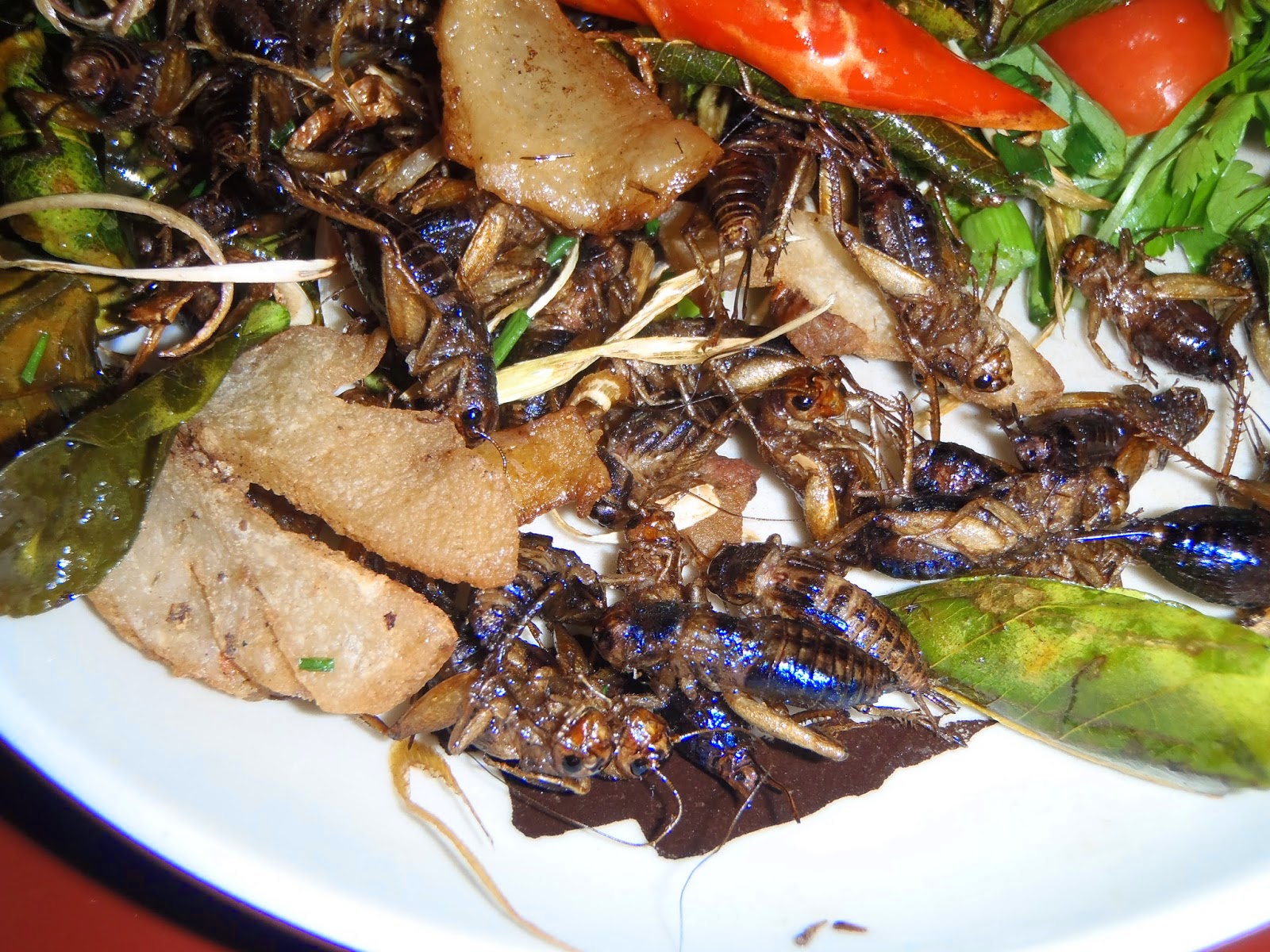The thought of eating insects is anathema to many people. However, I am exploring ways of how this barrier can be broken down by rearing my own tenebrio molitor and getting friends, family and work colleagues (and in future the general public) hooked...one at a time.
Many of us love the taste of a nice steak, pulled pork sandwich, a prawn curry or
BBQ chicken. For some, a meal isn't complete without meat but it may be important for this culture to change in future. Our reliance on forms of meat that are hungry for energy, water, space and that create environment issues of their own such as greenhouse gas emissions means that we have to think about how much of it we consume.
As greater numbers of people populate our planet, and millions join the privileged position of being able to buy more meat, we have to question how much of the Earth's surface we want to dedicate to the rearing of meat. It already stands at something in the region of 30% when including grains grown for animal feed.
Refocussing our attention on the oceans has already caused visible strains on that ecosystem and so isn't an easy solution either.
I have been learning that the buggy alternative can be tasty as well as making sense.
Edible insects take up much less water, energy and space than do their more common counterparts cows, sheep, pigs and chickens.
My own Tenebrio Molitor have given me a chance to test different ways that people may enjoy their protein-packed and nutritious offerings.
This week I tried a couple of approaches that I think may excite two different potential groups:
Chocolate-covered mealworms for kids and adventurous, sweet-toothed adults and...
 |
| Chocolate-covered mealworms |
Ground, toasted mealworms for people that will enjoy the unique, yet familiar taste...akin to shrimp paste and toasted sesame seeds while also being completely indistinguishable as every having been an insect.
 |
| Toasted Tenebrio Molitor for grinding |
 |
| Ground-mealworm powder: tastes like shrimp paste and sesame seeds |
Both are easy to do:
Take your mealworms, wash them, put them onto a tray and stick them in the oven on a low heat (about 100 degrees C). Take out the ones for chocolate after an hour and leave the others for longer - I let them brown a little, which gave them a great toasted flavour.
Melt some chocolate over boiling water with a teaspoon of coconut oil, then dip in the mealworms that were taken out first and place on greaseproof paper. Cool in the fridge.
The toasted mealworms, I simply ground down in a pestle and mortar as shown. The taste was great but you could season. I'm going to use mine in anything you would normally use something like shrimp paste - so mostly Asian cooking. However, I will be able to enjoy knowing exactly where they came from and the nutritional boost they are giving me.
Friends have enjoyed both the chocolate-covered mealworms and the ground mealworms. The reassuring thing is that they have often tried to find the familiar taste that they have without being able to quite put a finger on it. The Tenebrio Molitor have a unique flavour that isn't dissimilar to a number of things we eat already...that's why I think they could appear on a plate near you soon - even if you don't recognise them.







.JPG)
.jpg)




